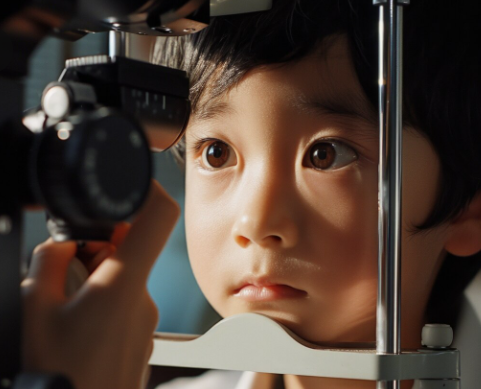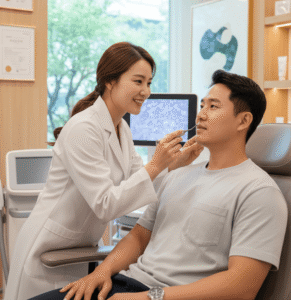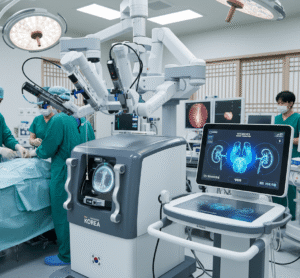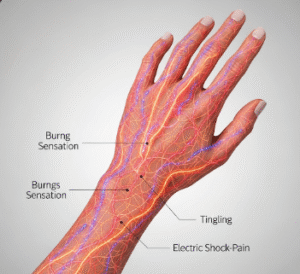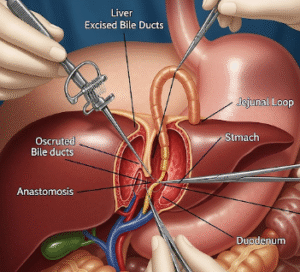South Korea is strengthening its commitment to student health through the expansion of vision and hearing screening programs in schools nationwide. Recognizing that early detection of sensory problems is key to academic success and overall well-being, the government, healthcare institutions, and local education offices are now working together to ensure every child receives timely, accessible, and accurate screening. These efforts reflect Korea’s broader focus on preventive health care and equal access for all students.
The Importance of Early Screening
Vision and hearing are essential for learning, communication, and social development. Yet, many children may experience problems that go unnoticed during early childhood.
● Vision Impairment: Nearsightedness (myopia) affects more than half of Korean students — one of the highest rates in the world. Uncorrected myopia, astigmatism, or lazy eye (amblyopia) can lead to reading difficulties and poor academic performance.
● Hearing Problems: Undetected hearing loss can delay language development, affect pronunciation, and limit classroom participation. Repeated ear infections or exposure to loud sounds from devices can worsen the risk.
● Early Detection Benefits: Identifying problems early allows for simple, low-cost interventions such as corrective lenses, hearing aids, or minor medical treatment, preventing long-term impairments.
As a result, vision and hearing screenings are now viewed as core elements of preventive healthcare within Korea’s education system.
National Health and Education Policies
The Korean government has made student health screenings a mandatory part of school healthcare. The Ministry of Education and the Korea Disease Control and Prevention Agency (KDCA) jointly oversee these initiatives.
● Comprehensive School Health Programs: Every student undergoes annual or biennial health checkups that include eye and ear examinations. These are conducted either by school nurses or in partnership with designated hospitals.
● Health Record Integration: Screening results are recorded in a national digital health database, allowing follow-up monitoring and coordination with parents and healthcare providers.
● Early Intervention Policy: Schools receiving screening results can refer students directly to local clinics or optometrists for further evaluation.
● Government Funding: Local education offices allocate budgets for screening equipment, staff training, and outreach programs to ensure consistency and accessibility across all regions.
This structured system ensures that no child is left undiagnosed, regardless of socioeconomic background.
How Screenings Work in Schools
Korean schools have developed organized, age-appropriate systems to identify vision and hearing issues efficiently.
● Vision Testing:
- Students undergo visual acuity tests using digital or traditional eye charts.
- Early graders receive additional testing for color vision and depth perception.
- Those showing signs of nearsightedness or other vision problems are referred for professional eye exams.
● Hearing Testing:
- Conducted using audiometers or portable devices in quiet classrooms or health rooms.
- Children with abnormal results receive follow-up tests for middle ear infections or auditory nerve issues.
- In some schools, mobile health units visit to perform hearing screenings for students in rural areas.
● Parental Notification:
- Parents receive printed or digital reports explaining results and recommendations.
- Schools often provide referral lists for nearby clinics or hospitals.
These screenings are conducted annually for younger students and biannually for older grades, ensuring continuous monitoring during critical stages of growth.
Collaboration Between Schools and Hospitals
Strong partnerships between educational institutions and hospitals are central to Korea’s success in expanding screenings.
● School-Hospital Partnerships: Hospitals provide medical teams to perform large-scale testing in schools, especially in areas without school nurses.
● Mobile Health Vans: In collaboration with local health centers, vans equipped with vision and hearing diagnostic tools travel to rural or underserved schools.
● University Involvement: Medical schools often send interns and residents to assist in community health screenings, fostering real-world training and social service.
● Referral Networks: Hospitals that detect abnormalities offer discounted or insurance-covered follow-up care, making treatment more affordable for families.
This model ensures professional accuracy while keeping services close to where students study.
Technology and Innovation in Screening
Korea’s focus on innovation extends to its school health programs.
● Digital Eye Testing Devices: Schools now use AI-powered eye scanners that detect early signs of myopia and monitor vision changes over time.
● Portable Hearing Screeners: Compact, noise-canceling audiometers allow accurate testing even outside hospital settings.
● Health Apps for Parents: Mobile platforms notify parents about screening schedules, results, and educational materials on eye and ear care.
● Big Data Monitoring: Nationwide health databases help track trends in childhood vision and hearing issues, guiding public policy and preventive measures.
These technological advancements improve efficiency and ensure consistent, accurate data collection.
Preventive Education and Awareness
Screening alone is not enough — education plays an equally important role in preventing sensory health issues. Schools integrate eye and ear care lessons into health education programs.
● Eye Health Education: Students learn about proper lighting, screen time management, and posture to reduce digital eye strain.
● Hearing Protection: Teachers educate children on safe listening volumes when using headphones and warn against excessive noise exposure.
● Healthy Habits Promotion: Schools encourage outdoor play and regular exercise, which are proven to slow myopia progression.
● Parent Seminars: Many schools host workshops where optometrists and audiologists explain early warning signs and treatment options.
These educational efforts help children take responsibility for their own health from an early age.
Community and Government Partnerships
Korea’s local governments and health agencies actively support schools in promoting vision and hearing health.
● Public Health Centers (보건소): Provide equipment, professionals, and funding to conduct screenings in local schools.
● Nonprofit Organizations: Groups focusing on children’s health run donation programs to supply free eyeglasses or hearing aids for low-income students.
● Corporate Social Responsibility (CSR): Companies in optics and audiology industries sponsor health campaigns and awareness events.
● National Health Insurance Coverage: Follow-up care, including eye exams and hearing aid support, is partially covered under Korea’s National Health Insurance Service (NHIS).
This collaboration between public and private sectors ensures equitable access to care for all children.
Challenges and Areas for Improvement
While screening coverage has expanded impressively, some challenges remain.
● Rural Accessibility: Some remote schools still face difficulties accessing advanced screening equipment.
● Overuse of Digital Devices: Despite education efforts, high screen exposure continues to drive rising myopia rates.
● Awareness Gaps: Parents sometimes neglect follow-up care after screening results.
● Shortage of Specialists: Some regions lack pediatric eye doctors or audiologists to handle referrals quickly.
● Data Management: Maintaining accurate national health databases requires continuous updates and coordination.
The government is addressing these issues through infrastructure investments, training programs, and awareness campaigns.
Future Outlook
Korea’s vision and hearing screening programs are expected to expand even further in the coming years.
● Comprehensive Annual Health Exams: Plans to include eye, ear, dental, and mental health checks as part of a unified national student health protocol.
● AI and Robotics Integration: Future screening devices will automatically analyze results and recommend next steps to schools and parents.
● Universal Screening Coverage: Every child, including preschoolers and those in rural or special-needs schools, will receive regular sensory testing.
● Increased Research and Funding: Universities and government agencies are studying links between screen habits, diet, and sensory development to design better prevention strategies.
These goals align with Korea’s long-term public health vision of ensuring early intervention and equal access to healthcare for all children.
Final Thoughts
The expansion of vision and hearing screenings in Korean schools marks a powerful step toward protecting children’s health and academic potential. By combining medical technology, public policy, and education, Korea is ensuring that every student can see, hear, and learn without barriers.
● Healthy senses mean brighter futures.
● Early detection today prevents lifelong challenges tomorrow.
● Korea’s schools are setting a global standard for child health care.
Through these expanding programs, Korea continues to demonstrate that caring for children’s basic senses is the foundation of both educational success and lifelong well-being.

